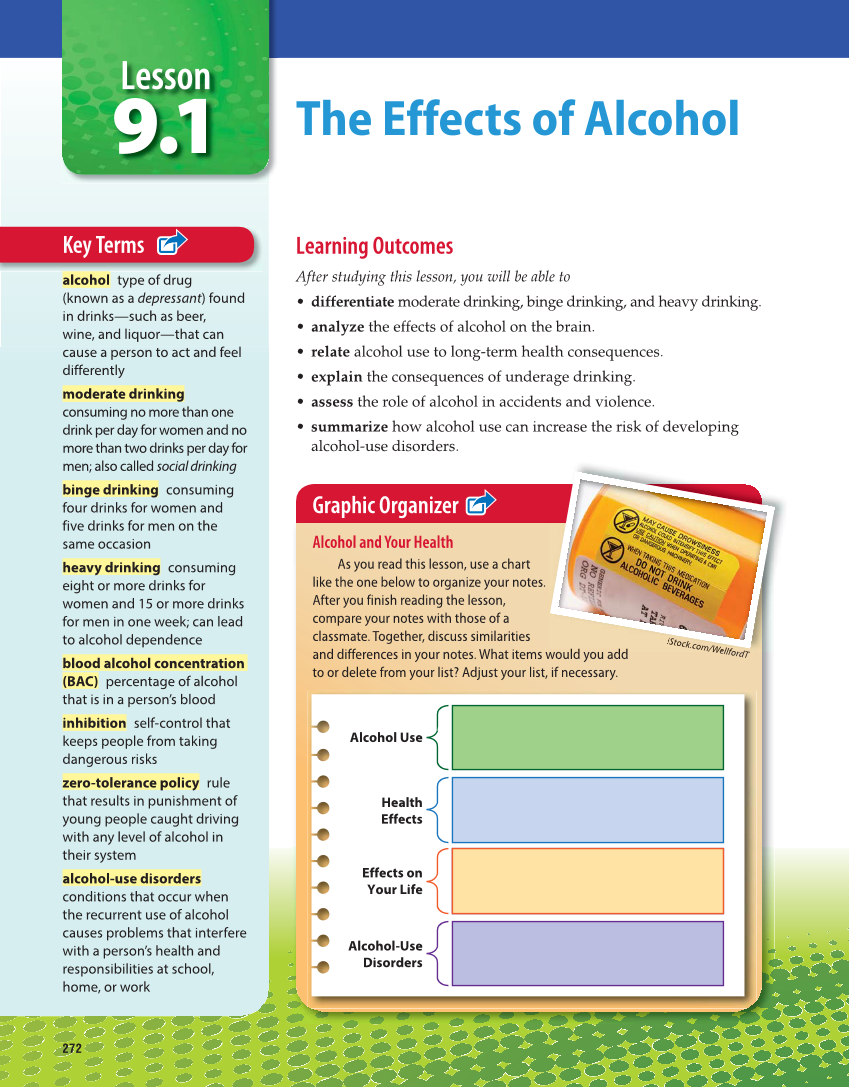272 Lesson 9.1 Key Terms Key Terms alcohol type of drug (known as a depressant) found in drinks—such as beer, wine, and liquor—that can cause a person to act and feel differently moderate drinking consuming no more than one drink per day for women and no more than two drinks per day for men also called social drinking binge drinking consuming four drinks for women and five drinks for men on the same occasion heavy drinking consuming eight or more drinks for women and 15 or more drinks for men in one week can lead to alcohol dependence blood alcohol concentration (BAC) percentage of alcohol that is in a person’s blood inhibition self-control that keeps people from taking dangerous risks zero-tolerance policy rule that results in punishment of young people caught driving with any level of alcohol in their system alcohol-use disorders conditions that occur when the recurrent use of alcohol causes problems that interfere with a person’s health and responsibilities at school, home, or work Learning Outcomes After studying this lesson, you will be able to • differentiate moderate drinking, binge drinking, and heavy drinking. • analyze the effects of alcohol on the brain. • relate alcohol use to long-term health consequences. • explain the consequences of underage drinking. • assess the role of alcohol in accidents and violence. • summarize how alcohol use can increase the risk of developing alcohol-use disorders. The Effects of Alcohol Graphic Organizer Graphic Organizer Alcohol and Your Health As you read this lesson, use a chart like the one below to organize your notes. After you finish reading the lesson, compare your notes with those of a classmate. Together, discuss similarities and differences in your notes. What items would you add to or delete from your list? Adjust your list, if necessary. iStock.com/WellfordTdTm/Wellfor woul d you add iStock.co Alcohol Use Health Effects Effects on Your Life Alcohol-Use Disorders
